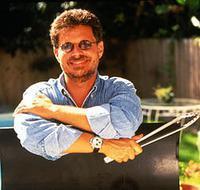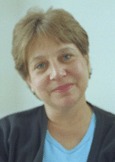I met the best friend I ever had when we were five years old, in kindergarten at Cassingham Elementary School in Bexley, Ohio. His name was Jack Roth, and the friendship lasted more than 50 years. Actually, when I say lasted, that’s past tense which means that it’s wrong. The friendship still lasts it still goes on, even though Jack is gone.
And that is the thought and the emotion behind And You Know You Should Be Glad: A True Story of Lifelong Friendship, and, I think, is the book’s most enduring lesson: Friendship is eternal friendship is the one thing that lasts forever.
There were five of us who were best friends in that town of 13,000 people: there was Jack, me, there was Chuck Shenk, Danny Dick, there was Allen Schulman. We called ourselves ABCDJ: Allen, Bob, Chuck, Dan, Jack.
We lived our nights at the Toddle House, solving problems after midnight over cheeseburgers, hash browns and banana cream pie; we cruised the quiet streets of our town, listening to the Beach Boys singing I Get Around, the Beatles singing She Loves You, when those songs, like us, were brand-new. As best friends will do, the five of us spent every waking hour together. And as best friends will do, we grew older, and moved to different towns, and saw each other less and less as the years went by.
Then the call came: Jack was dying.
We were 57 now, no longer kids. We had families and responsibilities and far-flung lives. But, as if by instinct, when we heard the news from Jack’s wife, we came together again, back in our hometown, to see him through to the end.
And You Know You Should Be Glad is the story of that last year how the boys from ABCDJ found each other again and rekindled the friendship, how we discovered anew just what a powerful and precious thing friendship is.
During that last year with Jack, in what you might think would have been difficult days and nights, we found laughter and warmth; during what you might think would be a time for only tears, we found hours full of the best of times and unforgettable moments. We revisited all the places that had meant so much to us when we were kids Jack wanted to taste his life, to give himself the gift of returning, with his friends, to the locations that had meant the most to him. We were with him every step of the way just as we had been when we all first were friends.
I’m told that the reason the book means what it does to people is that it’s the story of their own friendships, too. They see themselves in it. Everyone, if they’re lucky, has something like this in their lives this kind of friendship. It’s there, or it was, once upon a wondrous time.
When we were kids, we’d ride in Allen’s blue Ford on long summer afternoons and nights, windows open, radio blasting, Pretty Woman or House of the Rising Sun or Where Did Our Love Go playing on that radio, our arms reaching out the open windows and our hands, in unison, banging down against the metal roof of the car every time the Supremes sang the first syllable of baby : Ba-by, ba-by, where did our love go . . . . Those days and nights, we always thought, were the best times we’d ever find. But we were wrong. We found those times again, because of Jack. Against all odds, deep into our own lives, we became the boys in that blue Ford again. We found each other we found the wonderful times, we found the summer nights, we found the friendship.
It’s out there, that’s what we learned. The friendships that mean so much to us those first friendships that we think have drifted away and begun to disappear are waiting for us. That last year with Jack is something that will stay with us for the rest of our own lives. And what people tell me is that, after reading And You Know You Should Be Glad, they are picking up the phone and calling their own best friends.
You can find it again you can find that friendship. That was the last gift that Jack gave us: the understanding that friendship is the one thing that doesn’t die. It’s waiting for us. Best-selling author Bob Greene’s previous books include Duty, Once Upon a Town, Hang Time and Fraternity: A Journey in Search of Five Presidents. He is also an award-winning journalist whose Chicago-based syndicated column ran for 31 years.












